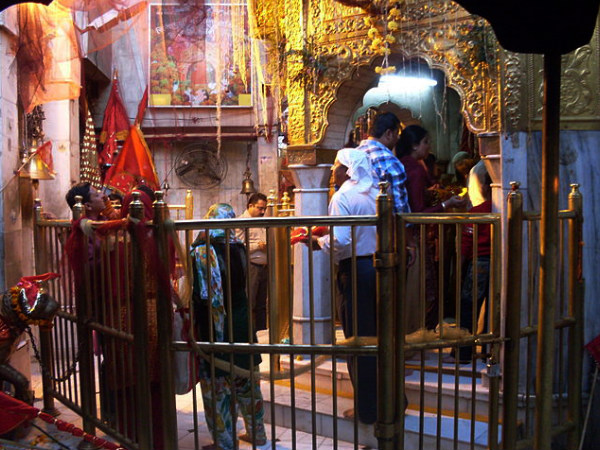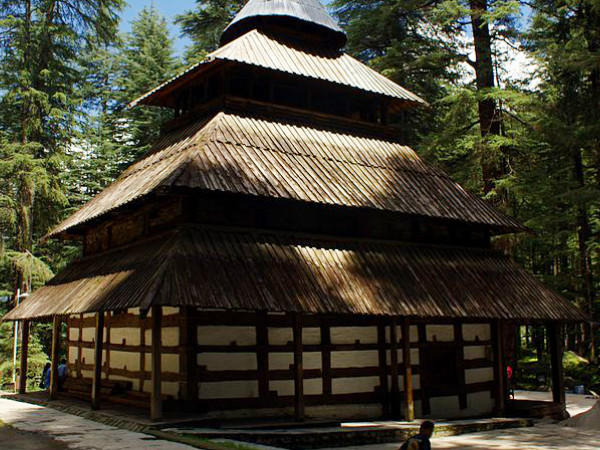Himachal Pradesh, situated in the north of India, is a tourist hotspot that draws visitors from across the globe. Each of the 12 districts of the state of Himachal Pradesh have numerous attractions with a wide range of locations for sightseeing, worship, trekking, mountaineering, fishing, river rafting, skiing, paragliding and ice skating, making the state a hub for adventure junkies. Nicknamed ‘The Abode of Gods’, the state has numerous Hindu temples including that of Jwalamukhi, Chamunda, Brajeshwari, Chintpurni, Baijnath, Laxminarayan, Chaurasi, among others. Various gurudwaras and churches are also located in different parts of the state. Paonta Sahib, Rewalsar, and Manikaran are the major Sikh pilgrimage centres. The Christ Church Kasauli, Christ Church Shimla, and St. Johns Church are the important Christian religious destinations of the region.
Bajinath Temple
Baijnath is a small town in the Dhauladhar range of western Himalayas and is famous for its 13th century temple dedicated to Lord Shiva as Vaidyanath, ‘The Lord of Physicians’. The temple has been continuously under worship ever since its construction in 1204 A.D. by two local merchants named Ahuka and Manyuka. The two long inscriptions in the porch of the temple indicate that a temple of Shiva existed on the spot even before the present one was constructed. The present temple is a beautiful example of the early medieval north Indian temple architecture known as Nagara style. The Svayambhu form of Sivalinga is enshrined in the sanctum of the temple that has five projections on each side and is surmounted with a tall curvilinear Shikhara. The temple attracts a large number of tourists and pilgrims from all over India and abroad throughout the year. Makara Sankranti, Maha Shivaratri, Vaisakha Sankranti and Shravana Mondays are celebrated with great zeal and splendour. Besides this temple there are other ancient shrines such as Mahakala temple complex, the Sidhanath temple and Mukutanath temple.
 Admire the architecture of the temple.
Admire the architecture of the temple.
Photo Courtesy: Rakeshkdogra
Jwalamukhi Devi Temple
The Jwalamukhi Temple, also known as Jwalaji, is situated at a distance of 30 km to the south of the Kangra Valley and is dedicated to the Hindu deity named Jwalamukhi, known as the deity with a blazing mouth. One of the noted attractions of the place is a copper pipe, out of which flames emerge. There are nine similar flames in the chamber of the temple, named after different goddesses including Mahakali, Unpurna, Chandi, Hinglaj, Bindhya Basni, Maha Lakshmi, Saraswati, Ambika and Anji Devi. According to folklore, the temple was built over the place where the tongue of Sati fell. It is believed that the goddess exists here in the form of tiny flames. The Mughal emperor Akbar is believed to have paid a visit to the temple to check its genuineness and on seeing the flames, he is said to have become a devotee of the goddess.
Chintpurni Mata Temple
The Chintpurni Temple is an important religious centre located at an elevation of 940 mt above sea level in Una. It is regarded as one of the most important Shakti Peethas. Devoted to the Hindu deity Chintpurni Devi, the prime attraction of the temple is the innermost sanctum having a statue of the goddess. This stone temple has its main entrance facing the north and at the entrance tare the idols of Hindu deities namely, Ganesh and Hanuman. In the premises of the temple is a banyan tree, where the first hair cutting ceremony known as ‘mundan’ of children is performed. Chintpurni Fair, also known as ‘Mata Da Mela’ is organised thrice every year in the Chintpurni Village. The fair is celebrated in the Hindu months of Chet (March-April), Sawan (July-August) and Asanj (September-October).
 Devotees offering worship at the temple
Devotees offering worship at the temple
Photo Courtesy: Gopal Aggarwal
Baba Balak Nath Temple
Baba Balak Nath Temple is a cave temple located 3 km away from Kasauli on the top of the Graner Hill. It is one of the most popular religious centres situated in the town and is dedicated to Baba Balak Nath, who was a great devotee of the Hindu deity Shiva. It is believed that childless couples who offer their prayers in this temple have their wishes of bearing children granted. The temple consists of several statues of Shiva along with a picture of a blessed child. The Hindu festival of Navratri is celebrated in this temple with gaiety and enthusiasm. Travellers visiting here can also see the Shah Talai that is located nearby and is accessible via ropeway.
Hidimba Devi Temple
The Hidimba Temple is one of the most prominent religious sites in Manali. This cave temple is dedicated to Hidimba Devi, the sister of Hidimb who is a demon from the Hindu mythology. Located at the foothills of the Himalayas, it is bounded by forests of cedar. This temple was constructed over a large rock emerging from the ground and dates back to 1553. There is rock inside the temple that is worshipped by devotees as a representation of the deity. According to a local legend, the king responsible for the erection of the temple ordered the amputation of the right hands of the artisans who worked on its construction. He did this in order to avoid the construction of a similar masterpiece. A ceremony called the ‘Ghor Pooja’ that involves seeking blessings from the goddess by a ceremonial horse, is organised at the temple. This religious site is thronged by devotees on the 14th of May, believed to be the birthday of the presiding deity.
Photo Courtesy: Kondephy






